Dedicated to Texas Ranger Capt. Leander H. McNelly
Winchester’s Model 1873 lever-action rifle was one of the most celebrated firearms in the Old West. It was an improvement on the Model 1866; replacing the brass receiver with one made of iron and later steel. It also introduced a new, more powerful cartridge, the .44 WCF or .44-40 to replace the .44 Henry rimfire. It immediately became popular with the Texas Rangers, a state organization that started as a ranging militia to protect settlers, and later became a law enforcement agency. In 2023, the Rangers celebrated their Bicentennial. In commemoration of this milestone event, Cimarron Firearms Co. is offering a reproduction of the Model 1873 lever-gun they are calling the Nueces Rifle.
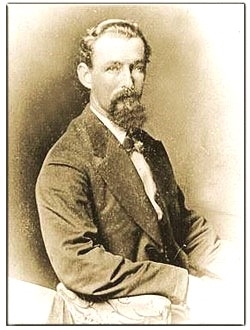
Capt. McNelly lead the Ranger Special Force that was assigned to rid the Nueces Strip of South Texas of bandits and rustlers; his career was short-lived due to tuberculosis.
Following the War Between the States, the Texas Ranger force was permanently established in 1874. The Frontier Battalion was created and had six companies, with up to 75 men each, and was commanded by Major John B. Jones. A Special Force was also organized to tame lawlessness along the Mexican Border and suppress violent feuds. The man chosen as the leader of this group was Captain Leander H. McNelly.
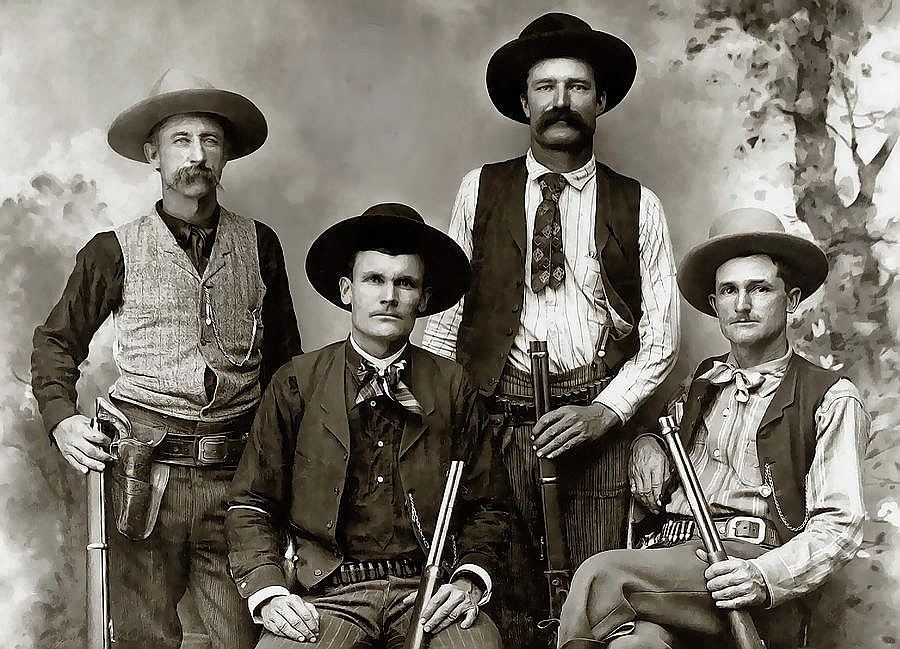
This is a tough looking group of Rangers from the mid-1870’s; you’ll note that 19th Century Rangers didn’t wear badges, but were required to carry state-issued credentials.
He was born in Virginia on March 12, 1844, and as a youth contracted consumption (TB). McNelly moved to Texas with his brother Petter in the late 1850’s hoping the climate would improve his condition. Working as a farmer proved beneficial, but in 1861 the Civil War began and he joined a Confederate unit, fighting in Texas, New Mexico, and Louisiana. McNelly became an officer in 1863, was wounded in August 1864, and his mounted scouts was one of the last Confederate outfits to disband in 1865.
The governor of Texas organized a Texas State Police force in 1870 and McNelly became one of its captains. Considered by most Texans a “Carpet-Bagger” organization that was often corrupt and heavy-handed, they were unpopular. Capt. McNelly however, was of a different stamp, and served honorably until the State police were abolished in April 1873. McNelly went from there to the Texas Rangers, where a Special Force was created to bring law and order to the Nueces Strip, an area between the Nueces River and the Rio Grande still claimed by Mexico as their territory. Banditry and cattle theft were rampant and the outlaws were led by a former Mexican military chief named Cortina. However, McNelly first had to put down the deadly Sutton-Taylor feud in DeWitt Co. that began in 1874. It took four months, but he and his 40 Rangers finished the job.
By April 1875, McNelly and his Rangers were in Nueces Co. where they had numerous run-ins with banditos. Several gangs operated on both sides of the border, led by Cortina and another bandit named Salinas. McNelly was bent on justice and gave little or no quarter to the Mexican outlaws. Another thorn in his side was an American rustler named King Fisher, who raided into Mexico, creating more trouble. McNelly was also known to be insubordinate with his superiors if they questioned his extreme measures. However, his operations were successful in cleaning up the Nueces Strip, and even came to terms with King Fisher.
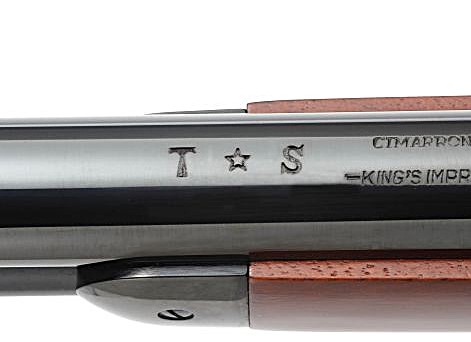
Stamped into the top of the Nueces Rifle barrel is this emblem; it replicates the one used on rifles issued by the Texas Rangers.
On November 20, 1875, Capt. McNelly engaged in what became known as the Las Cuevas War. He and his Rangers crossed into Mexico in a quest to return stolen cattle to the U.S. Mexican forces treated this as an invasion and a shoot-out ensued at their Las Cuevas Ranch stronghold. McNelly was wounded in both hands, and the force returned to Texas. Then after a night’s rest, the Rangers again crossed the Rio Grande near Camargo, Texas and dug in. McNelly confronted officials at the Mexican customs house, and demanded that about 250 stolen cattle to be returned. He took a Mexican captain prisoner and threatened to shoot him. McNelly’s bluff worked, and not 250, but 400 cattle were herded back into Texas. Shortly thereafter, McNelly retired as his consumption worsened, and died on Sept. 4, 1877 in Burton, Texas.
Leander H. McNelley is considered one of the great Ranger Captains. To honor his work in cleaning up the Nueces Strip, Cimarron Firearms Co. has introduced the Model 1873 Nueces Rifle in .45 Colt. This replica Winchester 73 lever-gun is made by Uberti and unlike most such reproductions, it doesn’t have a color case-hardened receiver or octagonal barrel. In its place, the Nueces Rifle has a polished blue receiver and 24.25” tapered round barrel. Atop the barrel, about 4-inches ahead of the rear sight, is a “T ⋆ S” stamp once used on rifles issued to the Texas Rangers. There are no barrel bands on this rifle; just a half-band up near the muzzle to secure the magazine tube. A post front sight is dovetailed into the barrel, and a step-adjustable, semi-buckhorn rear sight is located nearer the receiver. The lever, trigger, and hammer are color case-hardened.
The Model 1873 Nueces Rifles receiver has a removable side-plate on the left and right sides, to allow access to the action. There’s also a sliding dust cover over the ejection port on top of the receiver. When the lever is operated this cover slides back, out of the way. The cartridge carrier seen inside the port is polished brass. The up-swept hammer spur is checkered, while the 3/8”-wide trigger is smooth-faced. There’s no creep in the trigger, but the pull-weight averaged 8.7 lbs., with some over-travel. The hammer has a safety notch at the first “click” you hear when cocking it. A second safety is a button that protrudes just behind the trigger. Unless the lever is fully closed and the button is pressed in, the trigger is locked. Made from European walnut, the stock is nicely figured. The butt-stock has a straight wrist and a blue steel crescent-type butt plate. The for-end has a blue steel cap.
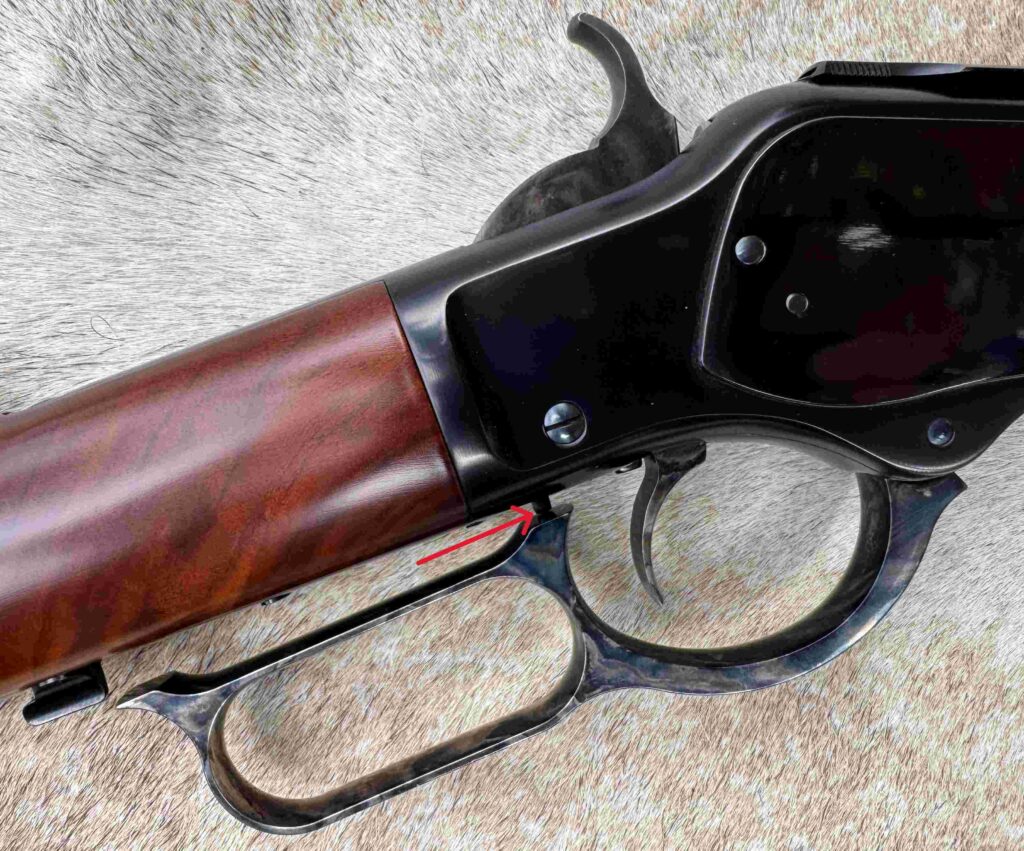
Besides the first “notch” on the hammer, which acts as a safety, the small button (red arrow) protruding from the receiver must be pushed in by the lever for the rifle to fire.
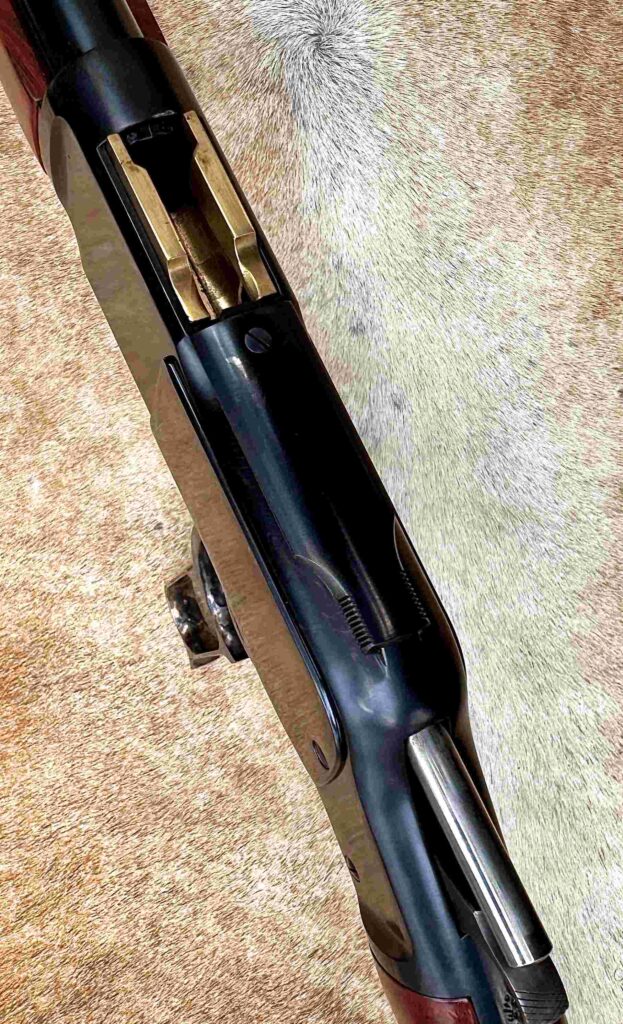
This top view of the receiver shows the open ejection port with the raised brass cartridge carrier; just behind it is the sliding dust cover, and the white steel bolt.
For my T&E of the Nueces Rifle, I decided on four different lead bullet .45 Colt loads. The first was Black Hills “cowboy” load with a 250 gr. round-nose, flat-point (RNFP) bullet. HSM Cowboy Action Cartridges was next, and has a 200 gr. RNFP bullet. Then I obtained Remington’s Performance Wheelgun ammo that has a 250 gr. RNFP bullet. Winchester offered their Cowboy Action load that has a 250 gr. RNFP bullet. Unfortunately, I found out right away that the Remington cartridges just would not feed properly. One round got caught in the ejection port of the rifle, and it wouldn’t feed or eject. I did some emergency gunsmithing at the range, and finally got the round out. I suspect the issue has something to do with the rim and extractor cut on the case base. Anyway, I decided to eliminate the Remington cartridges from the test.
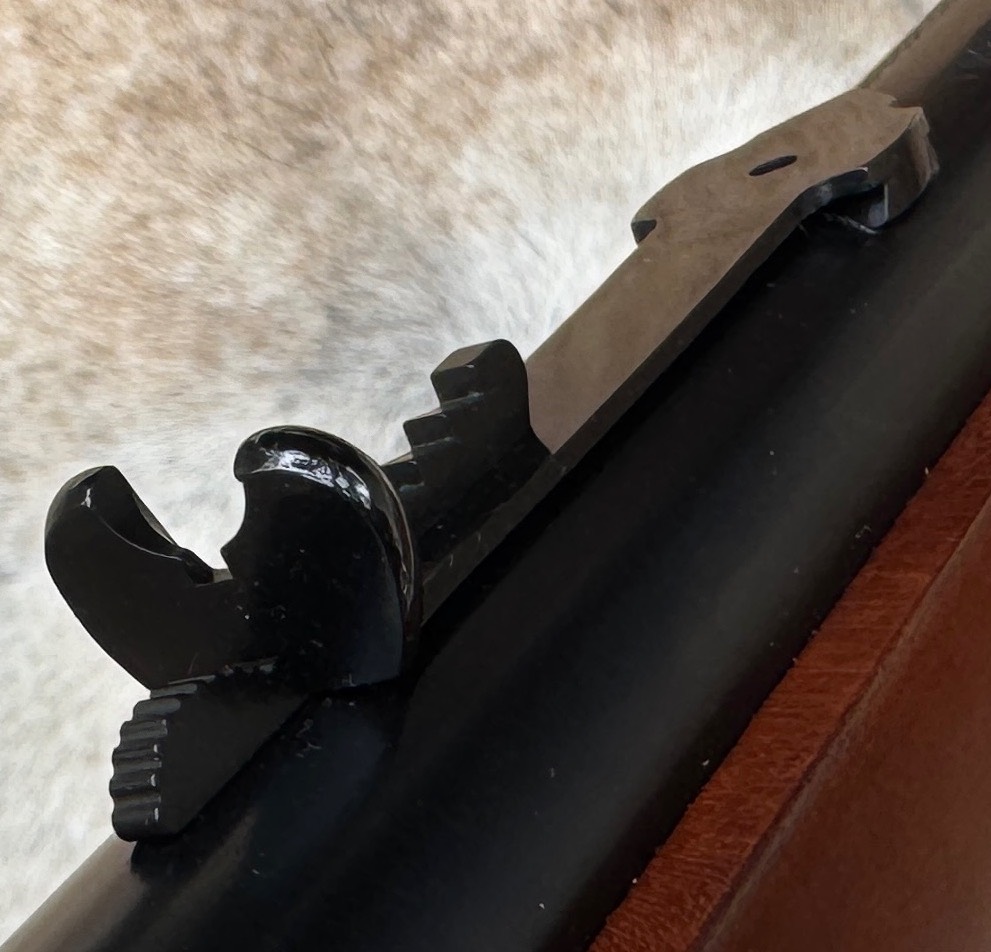
The Nueces Rifle has a step-adjustable, semi-buckhorn rear sight, that is mounted in a dovetail; it can be drifted laterally for windage adjustments.

The front sight is a post, tapering up from the base, and is also mounted in a dovetail.
I set up my Garmin Xero C1 Pro chronograph to measure some bullet speeds out of the rifle’s 24.25” barrel. This information is included in the performance table. Next, to check accuracy potential, I sent 8.5-inch diameter bullseye targets down-range to the 25-yard line. Shooting from a bench using an adjustable MTM rest, I fired three 5-shot groups with each of the three remaining test cartridges. Despite the heavy trigger pull, my best group measured 1.71” using the Black Hills cartridges. One group made with the HSM loads had 4 shots in 1.24”, but a flyer opened it up to just over 3-inches. None of the group averages were over 2.5 inches; as can be seen the performance table. Using a center hold, point of aim, point of impact was good.
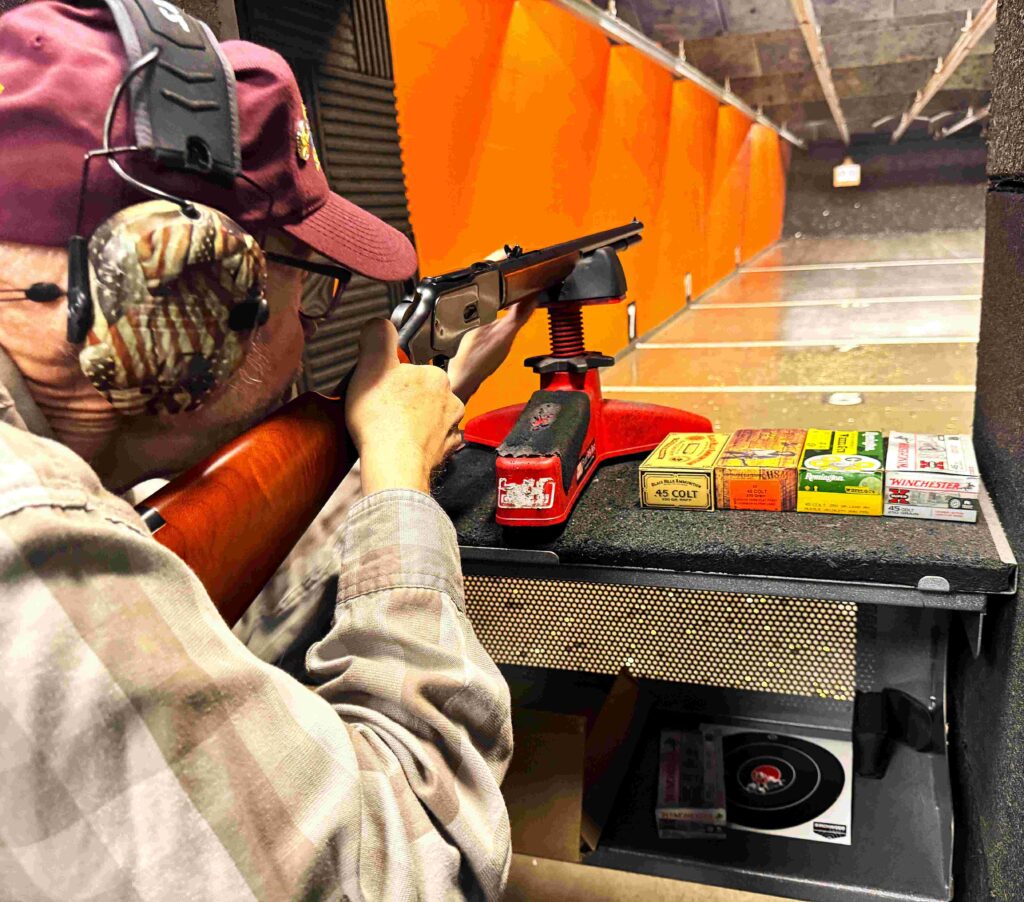
An accuracy potential evaluation was done at an indoor range, with shooting from the bench using an adjustable rest; three 5-shot groups were fired with the test loads at 25 yards.
My final exercise was a reliability evaluation, as I planned to take the Nueces Rifle to a western action shooting match. I sent a TruGlo “Gunslinger” target down to the 15-yard line and then loaded the rifle with 10 rounds of mixed test cartridges. Standing as I would at a cowboy shoot, I shouldered the rifle and worked the lever, while getting a rough sight picture, and pulling the trigger. I emptied the Cimarron lever-gun as fast as I could, then reloaded and did it again. I had no malfunctions, but for best functioning, don’t baby the lever, work it vigorously. All twenty bullet holes were on the target, but two strayed outside the torso area, and hit the bad guy’s left arm.
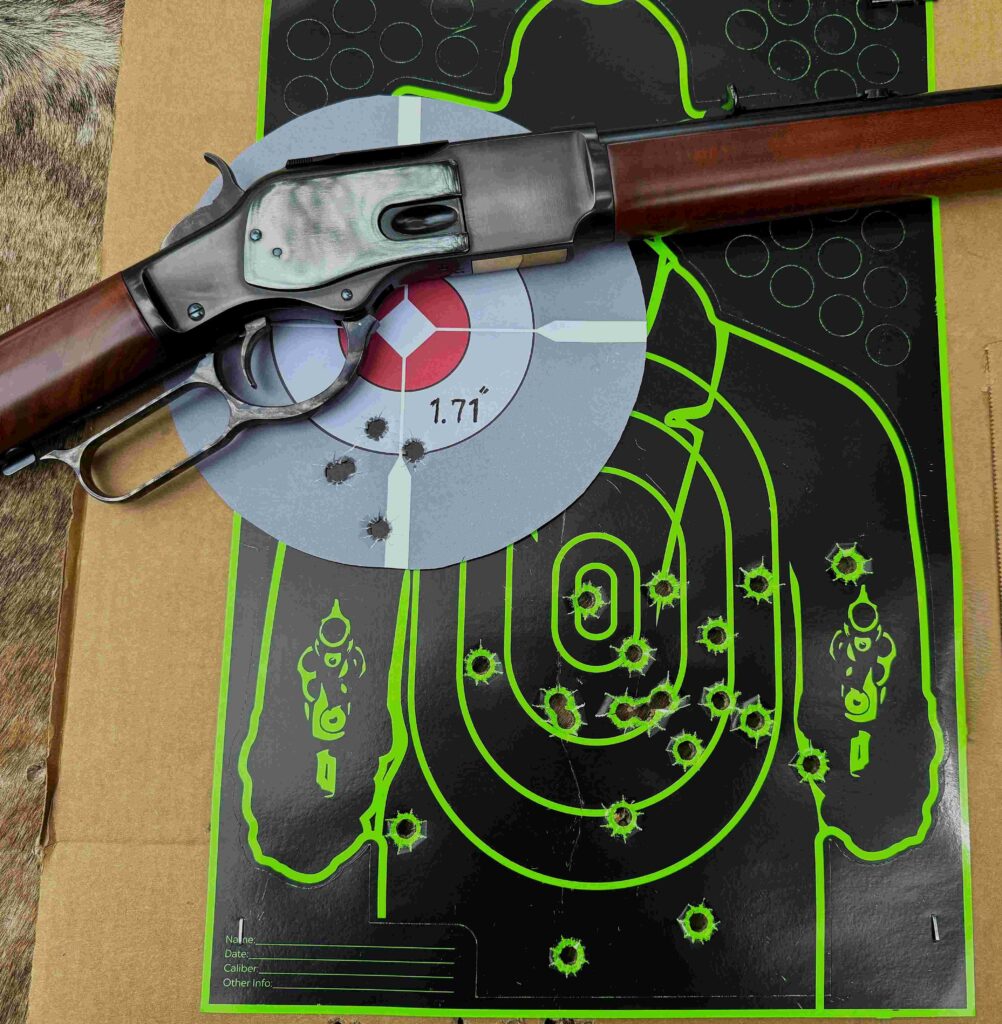
This 1.71” group was shot using the Black Hills .45 Colt cowboy cartridges; the Gunslinger target was used for a rapid-fire reliability test; all twenty shots stayed on target.
The shoot I attended was put on by the Scarlet Mask Vigilance Society, an NCOWS (National Congress of Old West Shootists) club. The Saturday match had a threat of rain, but it held off until the very end of the competition. In the persona of LaVista Bill, I used the Nueces Rifle and a .45 Colt replica Single Action Army, to compete in the Two-Gun “Working Cowboy” classification. I cleaned the first of six main-match stages, but the rest I had 1-2 misses. I didn’t notice the rifle’s stiff trigger during rapid-fire shooting. Some of the stages had some interesting shooting procedures that I blamed for my misses, along with the light trigger pull on my sixgun. Hey, a poor excuse is better than none! The Cimarron Nueces rifle ran 100% with the Black Hills ammunition I used at the match. I came away impressed with the Nueces Rifle, and I’m sure any of McNelley’s boys would’ve been proud to carry it.
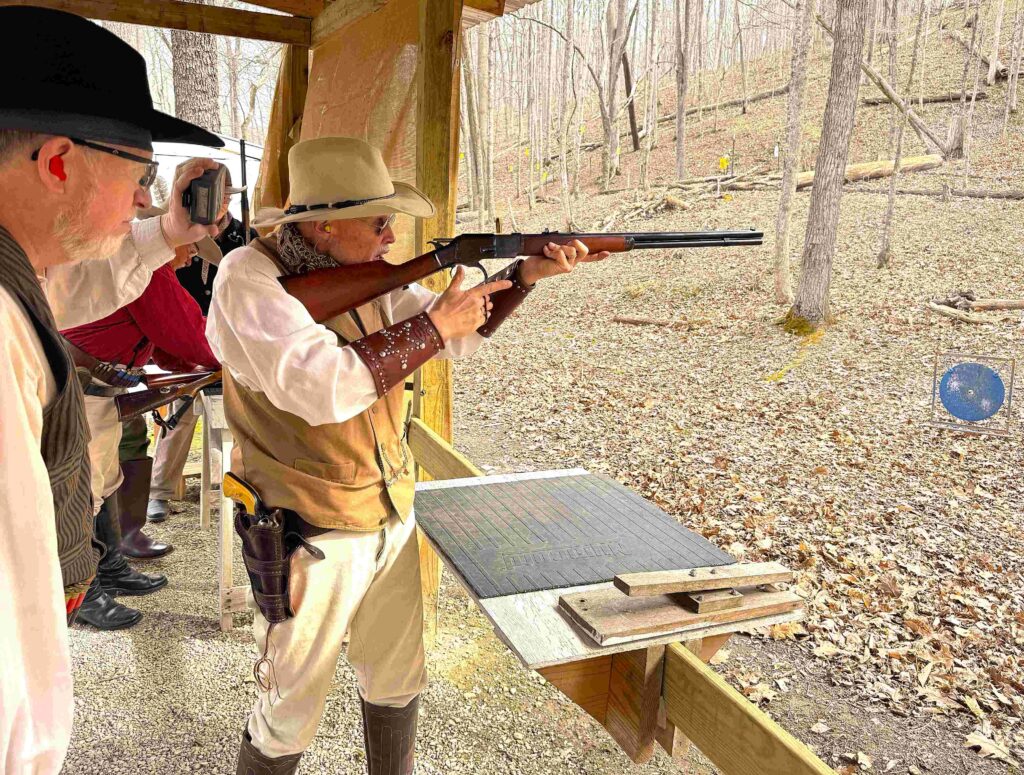
In his cowboy persona “LaVista Bill,” the author uses the Nueces Rifle in a western action shooting match; the new Cimarron “smoke-pole” ran 100% with no issues.
Additional Information
Cimarron FA Co. www.cimarron-firearms.com
Cimarron Nueces ’73 Rifle Specifications
MECHANISM: Lever action repeater
CALIBER: .45 Colt
CAPACITY: 13 cartridges
BARREL: 24.25”
OA LENGTH: 43.67”
EMPTY WEIGHT: 7.5 lbs.
SIGHTS: Step-adjustable rear, blade front
FINISH: Polished blue and color case-hardened parts
STOCKS: European walnut
MSRP: $1,768.88
Cimarron Nueces Rifle .45 Colt Performance
| Cartridge | Ave. Velocity | Best Group | Average Group |
| Black Hills Cowboy 250 gr. RNFP | 1112 FPS | 1.71” | 2.50” |
| HSM Cowboy Action Cartridges 200 gr. RNFP | 1103 FPS | 2.18” | 2.25” |
| Winchester Cowboy Action 250 gr. RNFP | 930 FPS | 1.97” | 2.29” |
NOTE: Bullet weight measured in grains, velocity in feet per second, 15” from the muzzle by a Garmin Xero C1 Pro chronograph, and accuracy in inches for three 5-shot groups at 25 yards.
To locate a dealer near you visit www.lipseys.com/dealerfinder

